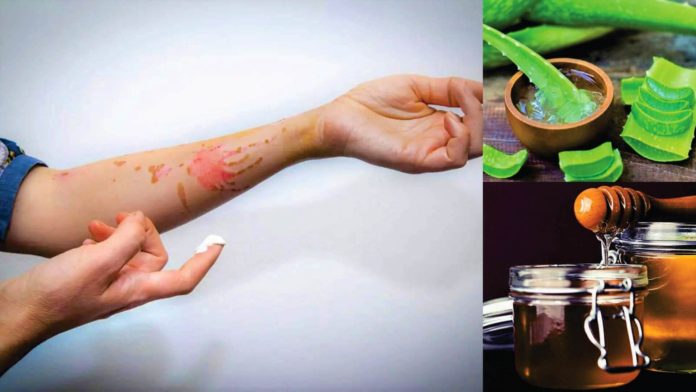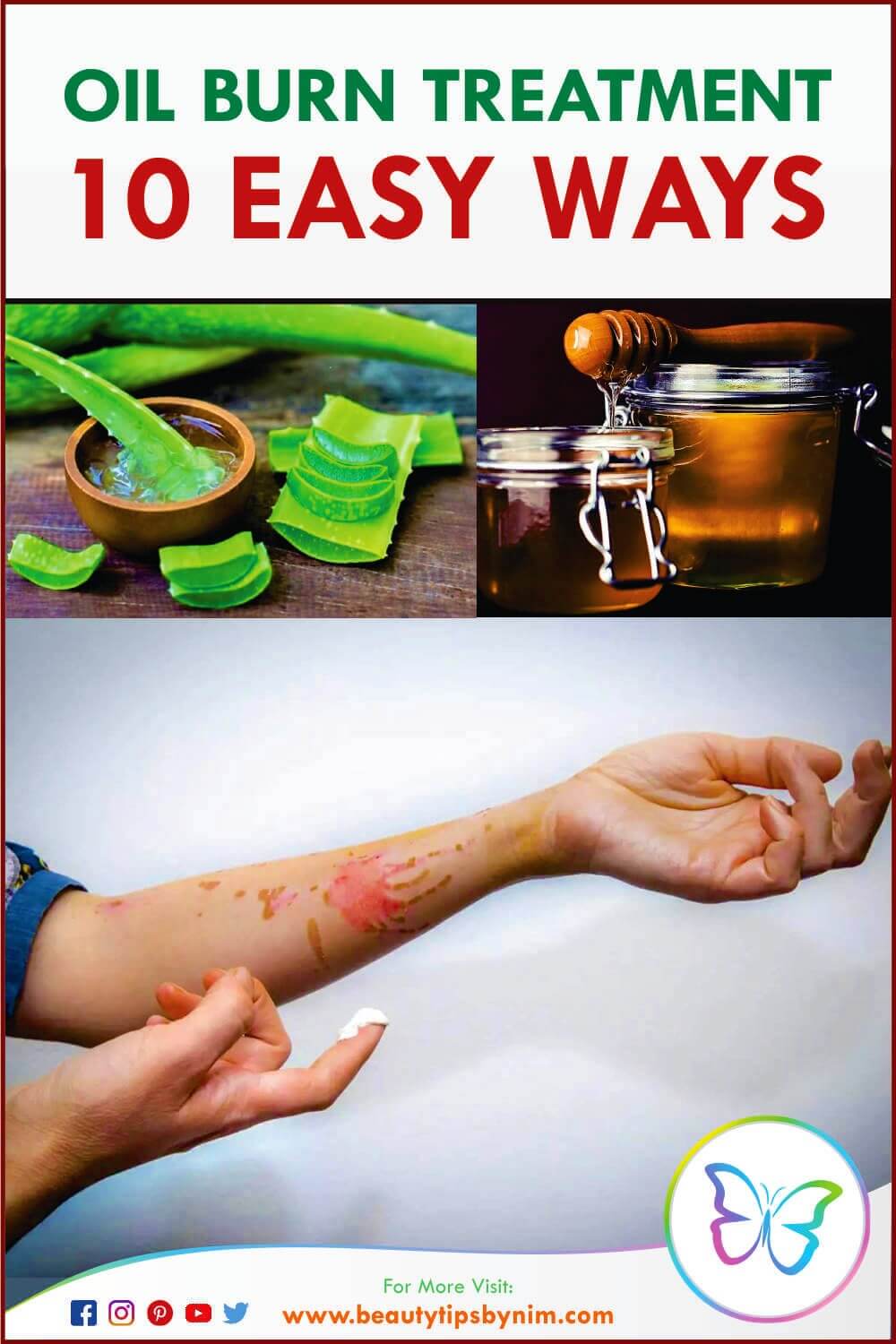Hot oil burns are common among people who use deep fryers. We spend a considerable time of our time in the kitchen. After all, that is where food is, in the kitchen. While cooking for pleasure, or as a basic part of survival that consists of eating, all of us have suffered from oil burns.
Suppose we are too distracted with something else going on in our surroundings, or we throw sliced up vegetables in the wrong, the oil may end up hitting our body and face. Oil burns are a serious problem that we face while working in the kitchen, and while we should exercise caution, sometimes accidents do happen. And we at Beauty Tips By Nim bring you several remedies and cures you can practice to relieve the pain and after-effects of oil burn Treatment.
How to Treat Oil Burn?
Remember these remedies are just for first and second-degree burns. When you see major damages to your skin as a result of oil burns on your face and skin, rush to seek medical help immediately for oil burn treatment.
1. Wash the Area with Cold Water and a Mild Soap:
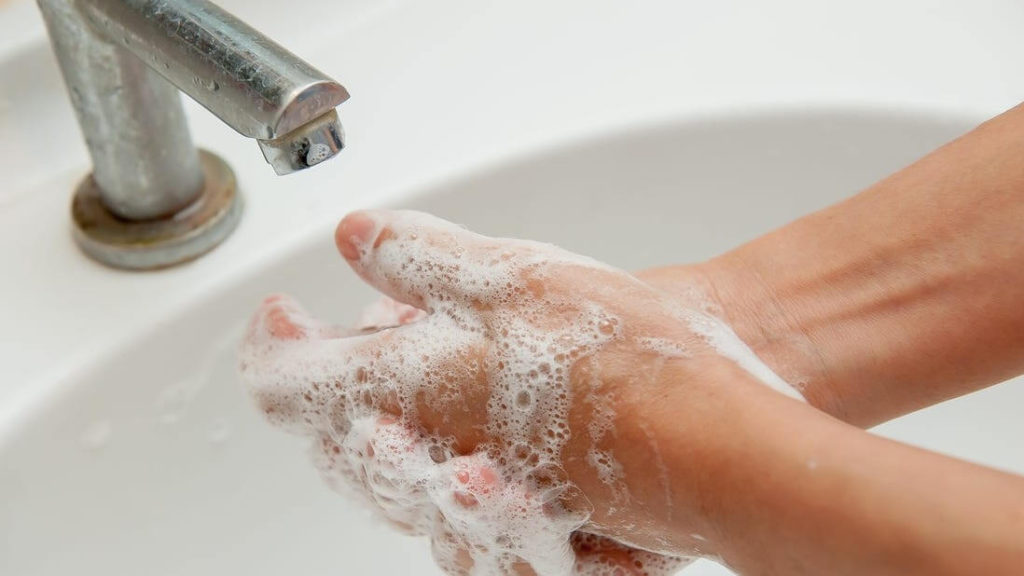
When you do face an accident where you get an oil burn, the first thing you should do to treat the affected area is to wash it with cold water. Under running water, wash the area with cool water and then rub a mild soap on it to disinfect the area. This is important to stop the growth of pain and infection in the oil burned zone of the body.
2. Apply a Cold Compress, As In a Clean Wet Cloth:
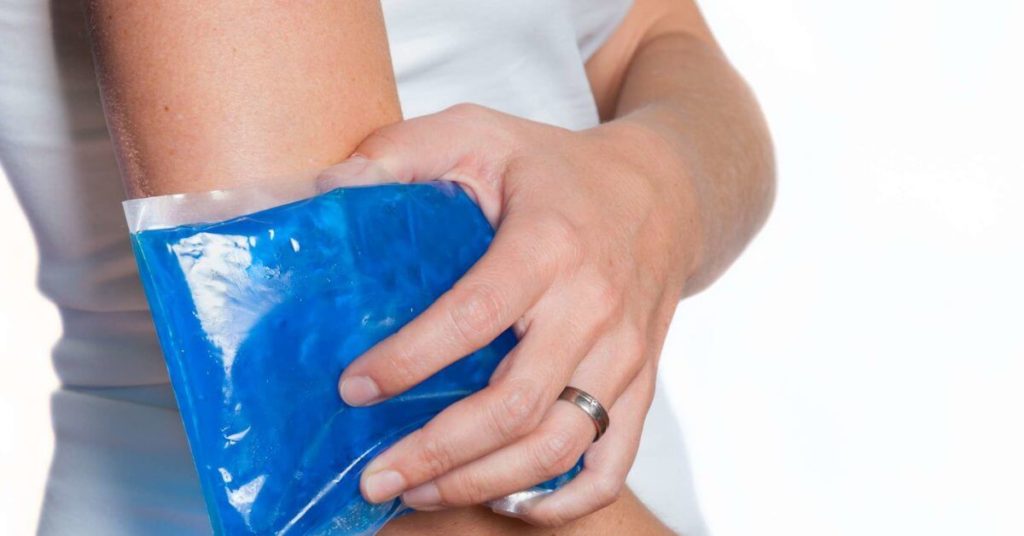
The danger of heightened pain and swelling is still is not over. So, you have to use a cold compress for 5-15 minutes over your oil burn affected area. Do not use an extremely cold compress or ice as it will irritate the area more, restrict blood flow to the skin, and cause further damage to the tissues.
3. Apply a Layer of Antibiotic Ointment on the Affected Area:
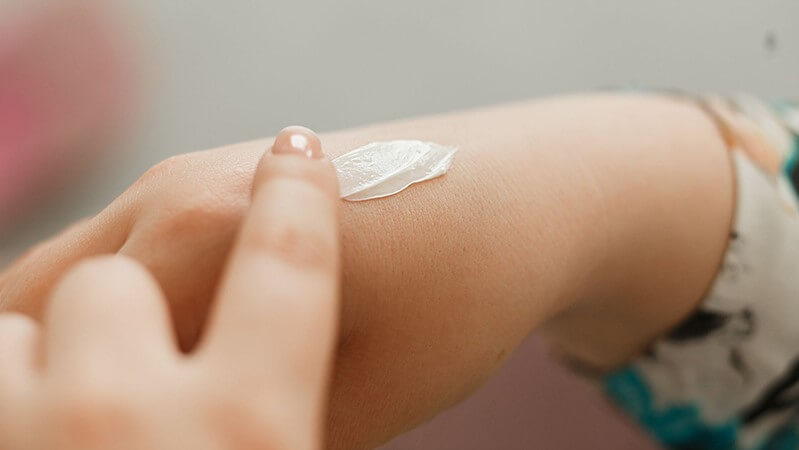
Look for an anti-biotic cream in your first aid cabinet. Antibiotic cream help prevents infection from germinating in the oil-burned wound on the skin, aid the wound to heal faster and protect your blister by providing a layer of coverage. It is advised to cover up the wounded area with a bandage after applying antibiotic ointment.
Some of the popular antibiotic ointment you can use and look to buy in chemist shops are Bacitracin or Neosporin.
Check Out: Top 5 Homemade Remedies For Dry Skin
4. Treat Oil Burn With Aloe Vera:
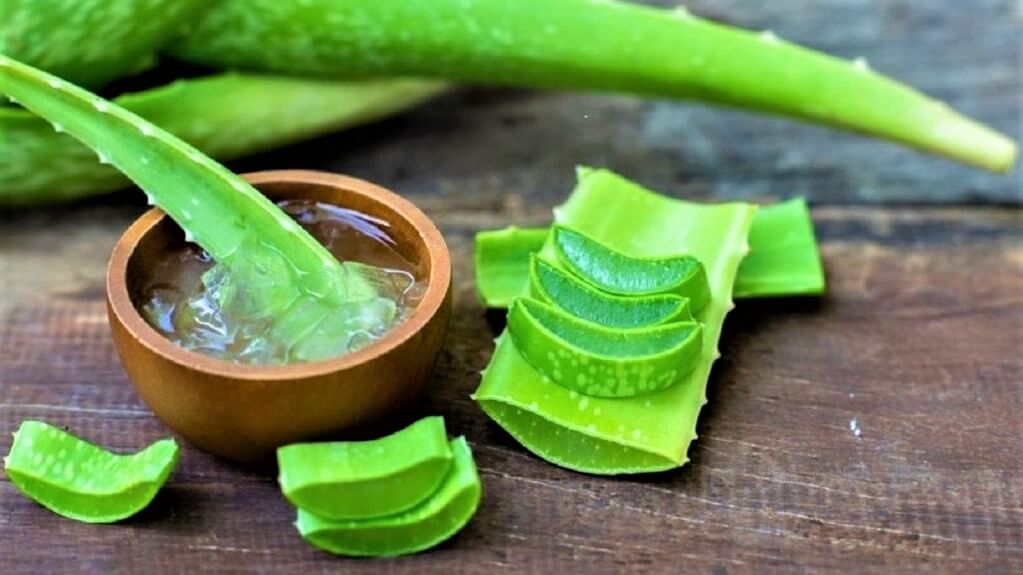
One of the safest and most effective oil burn treatments you can use to your aid is Aloe vera. Also called the burn plant, aloe vera helps heal any first- to second-degree burns. Enriched with anti-inflammatory properties, aloe vera additionally promotes the circulation of blood, fastens the healing process of the wound, and prevents the growth of bacteria on the oil-burned zone on the skin.
It is best advisable to use fresh aloe vera gel from aloe leaf to your burn for desired results. You can also opt to use store-bought aloe vera topical products, but ensure that it has a high percentage of aloe vera present.
5. Honey:
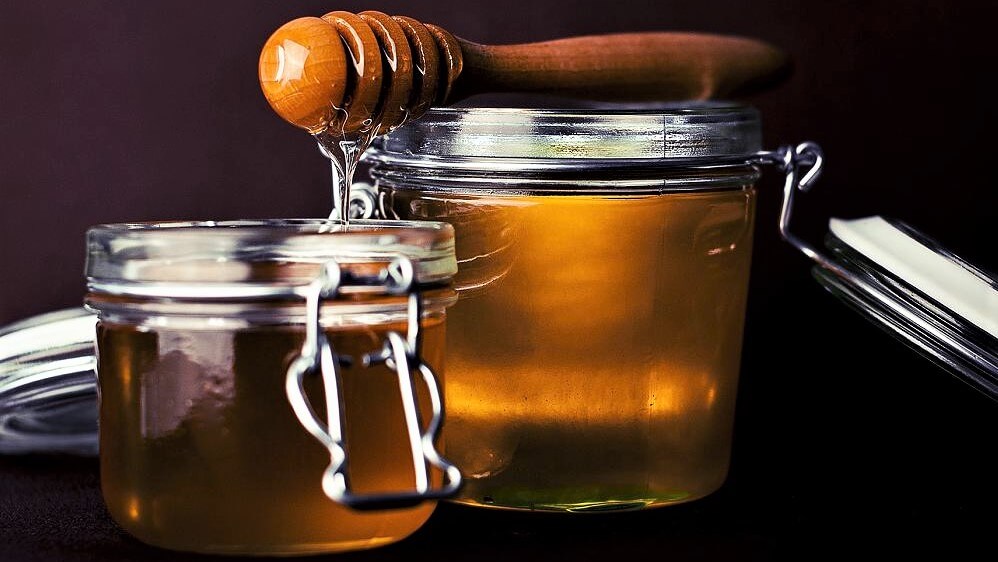
Honey is a revered ingredient for its health and topical uses and benefits. Apply honey on a bandage and place it over your oil-burned wound or blister to prevent infection, ease the pain and soothe the area. This will also sterilize the area, help the oil burned to heal, and help restore the pH balance of the wounded areas.
6. Toothpaste:
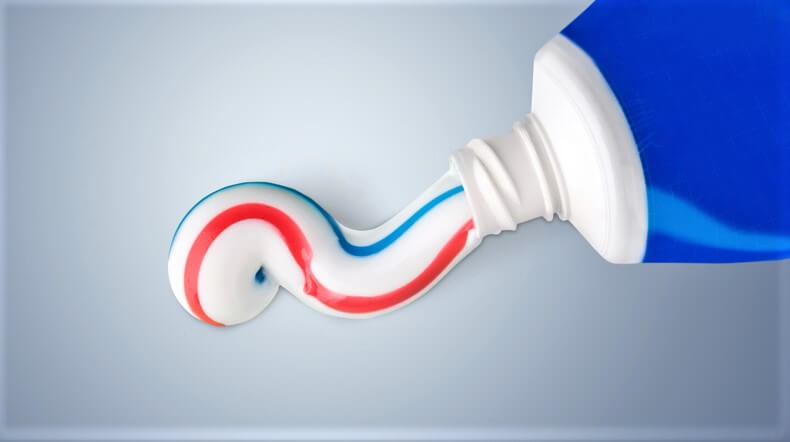
It is a bone of contention among many whether toothpaste works or not on oil-burned areas as a remedy. But the famous consensus is that mint toothpaste does have a positive effect on oil burned wounds.
Some opinions are against the use of toothpaste as a remedy for oil burns and blisters as it not sterile enough and may encourage the spread of bacteria on the surface of the wound. So use toothpaste when you are out of options to treat an oil burn and apply your instinct.
7. Tea Bags:
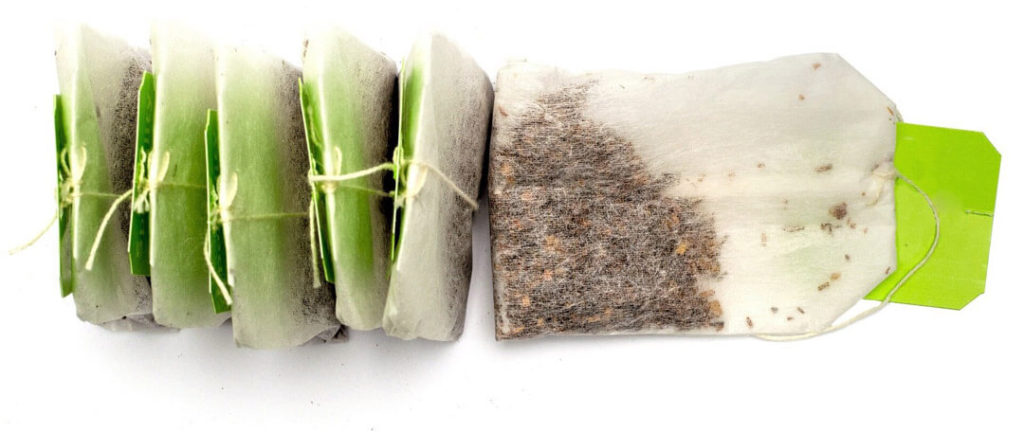
Enriched with tannic acid, you can reuse tea bags as a pain reliever after suffering from an oil burn. Teabags will soothe the pain from the zone. Just one teabag won’t work, you have to use at least two-three wet tea bags on the surface of the oil burn to heal the area and provide relief. Make sure the tea bags you are using are clean enough, do not take the risk of applying wet dirty tea bags on open oil-burn wounds and blisters.
8. Vinegar for Oil Burns:
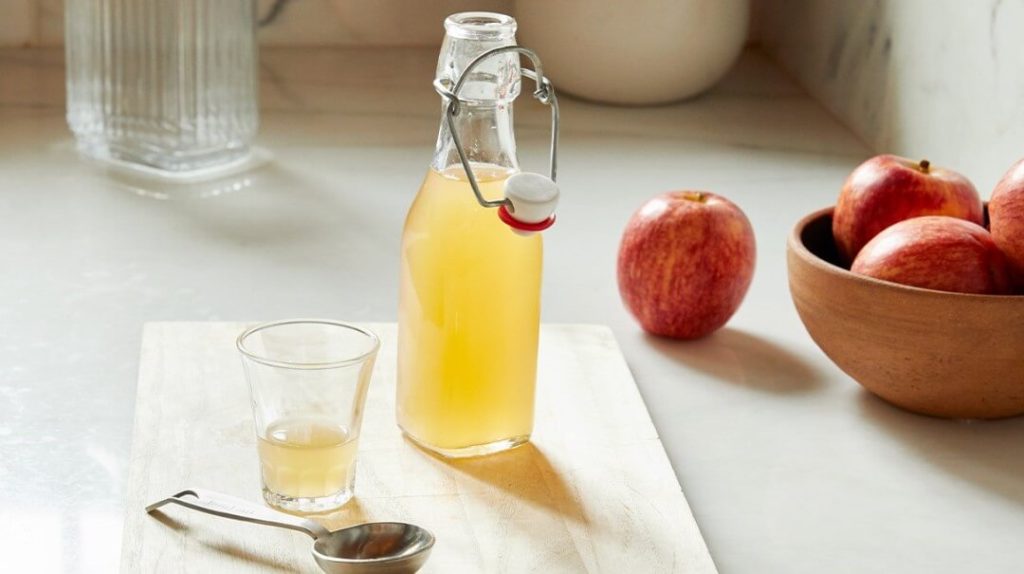
Vinegar, particularly white vinegar, is enriched with acetic acid. This acid in white vinegar helps soothe the pain and itch from the oil-burn wound, and reduce inflammation, too. White vinegar also has antiseptic and astringent properties which help keep the wounded area free of infections.
Soothing the oil burned area, drawing away heat from the oil-burn, diluting the pain naturally, you must remember how to use vinegar on your wound properly. You should pat your burned area with vinegar-wet paper towels or use cotton swabs similarly.
MUST-READ: 5 Effective Home Remedies For Dull Skin
9. Milk:

Milk, rich in fat and protein, soothes the oil-burned area, hydrates it, and helps the healing process of the wounds and blisters. Remember to use full-fat, whole milk, or yogurt of cold temperature to use it as a remedy for your oil-burned area. Let the milk or yogurt rest on your burned area for 15-30 minutes at least.
10. Vanilla:
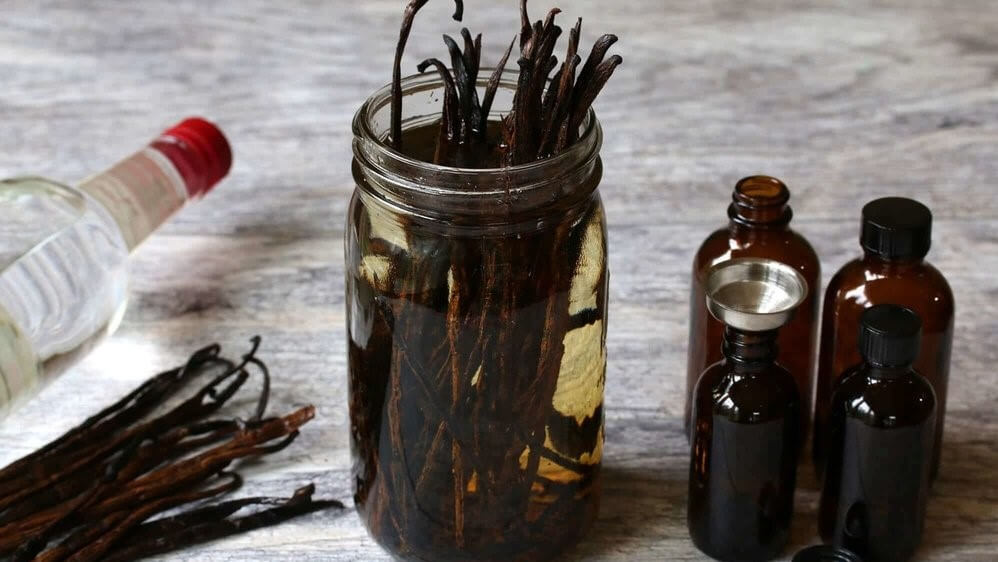
While this option may not be available to some, those who do have it should use it to their best advantage when suffering from an oil burn. Only in case of first degree burns, use vanilla extract by dabbing a cotton swab into vanilla and applying it gently on the skin. This will alleviate the pain and burn in the area, and help in the healing process.
It is advised not to use oils like coconut, lavender, olive to remedy oil-burned areas as they do not work in healing the burned area. Rather, any kind of oil applied on burns and wounds traps heat, slows the healing process down. Also, do not use butter and egg white as a cure for oil-burns too. Along with trapping heat on the oil-burned area, butter and egg white also make the burn worse and increase the chances of infection.
Only use these are the oil burn treatment of first and second-degree. When you see layers of skin, major burns, and more severity in the wound, rush to seek medical help in a hospital immediately.
Also, practice care when cooking with oil on the stove. Opt for an air-fryer if you can afford, to eliminate the risks of oil burns. Do not keep your face and body too near the stove while cooking with oil. These remedies do not work for electric burns. In case of electric burns, rush to a medical practitioner immediately for help.
Seek a doctor’s advice if these oil burn treatments didn’t work and did not subside in a few days. Let us know in the comments if there are any more oil-burn remedies you know.
Follow us on Instagram for effective home made remedies and wellness tips.
FAQs on Oil Burn Treatment:
How long do oil burns take to heal?
It takes about 3-6 days for an oil burn to heal. It might take a few more days, depending on the severity of the burn. Remember to follow the cure remedies and protect the burn from infections and dirt.
Can you put Vaseline on a burn?
Petroleum jelly or Vaseline may help to give the burn a water-protective layer. You can apply a vaseline layer and a non-stick bandage on top for the wound to heal faster.
What ointment is good for burns?
You can apply petroleum jelly or aloe vera on top of a burn to help it heal faster. But, if the burn is severe or causes you pain, opt for Neosporin or Polysporin instead.
How do you know when a burn is bad?
There are four degrees of burns. First and second-degree burns are easier to care for at home while third and fourth-degree burns need serious medical care. If you feel immense pain, witness layers of skin visible from the burn, or bones, rush to seek medical help in a hospital immediately.
Should you cover a burn or let it breathe?
It is better to cover a burn with an ointment for it to heal properly. Airing most wounds and burns actually dries out new skin cells, resulting in heightened pain and a slower healing process.
